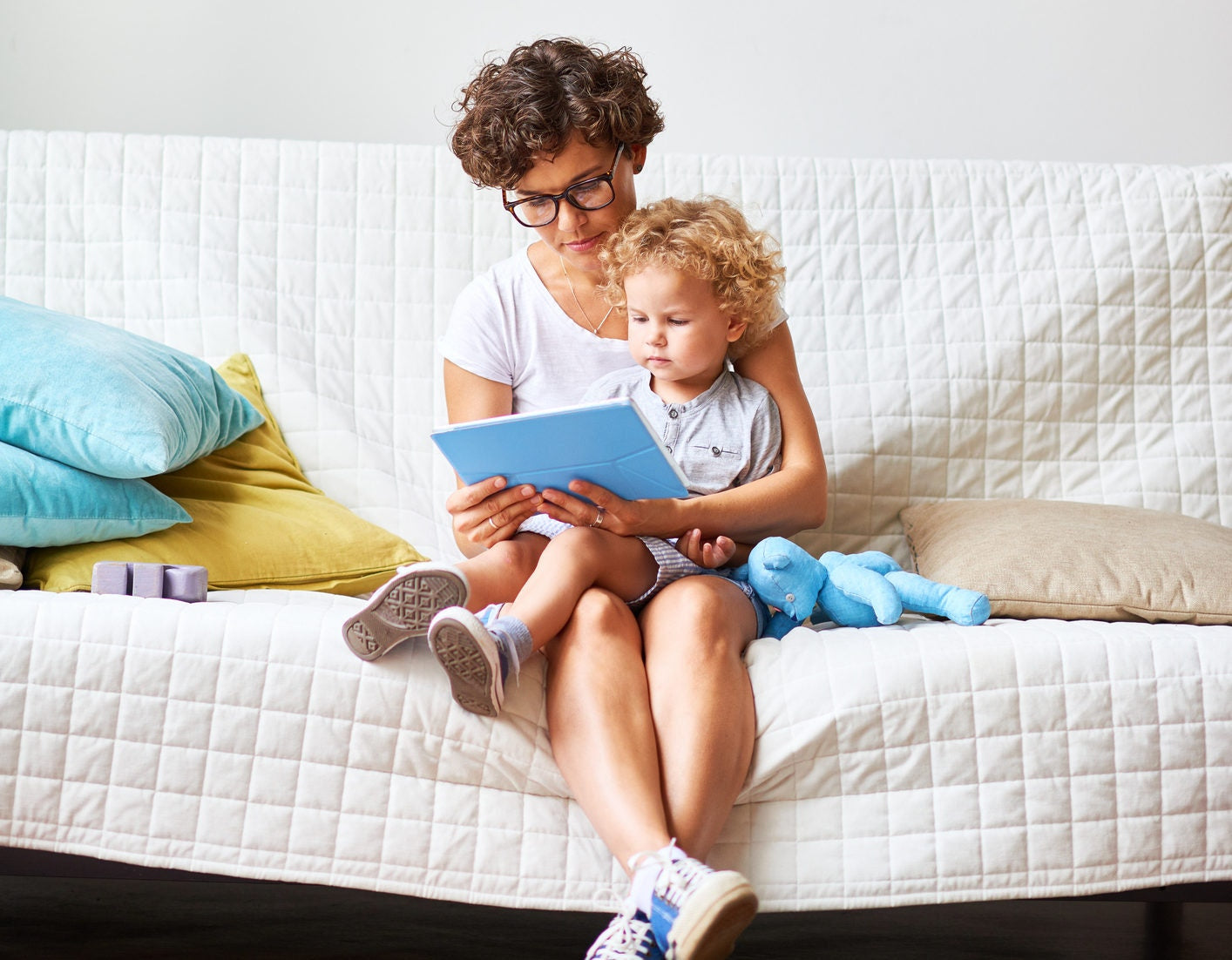Are your children having trouble sleeping and then dragging the next day? It might be from all the time they spend on their electronic gadgets. There’s no question that children and teens are spending more of their day using technology.
According to Common Sense Media’s report the number of children who use mobile devices has doubled since 2001 from 38 to 72 percent, and the average daily use of these devices has nearly tripled. The organization also found in their that teens use an average of nine hours of entertainment media per day, and tweens use an average of six hours, not including time spent using media at school and for homework.
Electronics have become such a part of our daily lives that more of us are using cell phones, computers, tablets, and e-readers right up until we roll over and try to go to sleep for the night. In fact, more than 90 percent of both in the United States use technology before bed. About 72 percent of children ages six to 17 sleep with at least one electronic device in their bedroom.
The National Sleep Foundation, which is dedicated to improving health and well-being through sleep education and advocacy, warns that the quantity and quality of children’s sleep is being negatively impacted from screens before bedtime.
- Children who use electronics at night have later weekday bedtimes, experience fewer hours of sleep per week, and report drowsiness during the day.
- Adolescents with a bedroom television have later bedtimes, more difficulty falling asleep, and shorter sleep.
- Texting and emailing after lights out, even once per week, dramatically increases daytime sleepiness among teens.
This pattern is troublesome because adequate sleep is essential for children’s health and happiness, including brain development, memory, mood, self-regulation, attention, physical growth, immune function, creativity, cardiovascular health, and weight control.
How technology affects sleep
There are three main ways that technology prevents our children from resting soundly.
Suppresses melatonin
Screens on cell phones, computers, tablets, and televisions emit what’s known as blue light. This light is picked up by photoreceptors in the retina that sense light and dark, signaling to the brain that it’s either morning or night. Typically, the sun triggers our photoreceptors, but studies show that even small electronic devices emit enough light to trick the brain into thinking it’s time to stay awake.
The problem is that blue light hinders the production of melatonin, the hormone that controls our sleep/wake cycle or circadian rhythm, the internal clock controlling biological processes, like body temperature and hormone release. At night, our melatonin levels are supposed to rise before we go to sleep, so reducing it makes falling asleep more difficult.
Several research studies have found how blue light impacts melatonin levels. In 2013, scientists at Rensselaer Polytechnic Institute found that people who used tablets while wearing orange goggles, which filter blue light, had higher levels of melatonin than those who either used tablets without goggles on wore blue-light goggles.
A recent study published in the Proceedings of the National Academy of Sciences found that e-readers not only suppressed melatonin, they also reduced the amount of REM sleep, the most restorative form of sleep we get.
Fortunately, has narrowed down the amount of time that blue light causes a problem. After 1.5 hours of technology use in the evening, people reported feeling less sleepy and performed better on mental tasks. They also concluded that repeated use of a bright screen over five days can delay the body’s internal clock by 1.5 hours, which means people will want to go to bed later and sleep in longer.
Keeps their brain alert
Engaging in technology keeps our brain alert, so if kids are surfing the web, reading Facebook posts, or playing a video game late at night, their brain will remain active and cause them to feel as though they need to stay awake even if they’re tired. Additionally, kids and teens need time for their mind to disconnect and unwind after spending so many hours throughout the day engaged with technology.
Technology can also trigger stress and anxiety from reading an unsettling email or Facebook post, watching a disturbing television show, or playing a violent video game. Dr. Ben Carter, lead author of a study published in JAMA Pediatrics that analyzed hundreds of sleep studies between 2011 and 2015, suggests that online content may be psychologically stimulating and keep children and teens awake far past the hour when they turn off their devices and try to sleep.
Wakes them up
Finally, phones and other electronics can disrupt sleep with chimes and buzzing set to alarm us that a new email or text message has arrived. If we don’t turn off all these distractions, we will surely be woken up.
Ways to break the technology bedtime habit
So, what can parents do to ensure their kids’ sleep is not impacted by their technology use?
Power down
Devices should be put away at least 30 minutes before your child’s bedtime. More time is better.
Make the bedroom a gadget-free zone
To avoid your child from grabbing their device while they lie in bed, ban technology from their room at bedtime.
Dim the screen
Dim screens as much as possible for evening use. Just check out the settings for your device or download a free software program called f.lux that decreases the amount of blue light emitted by computer screens.
Limit daytime use
Because technology use has skyrocketed and it can impact how children and teens feel at bedtime, consider limiting their use overall. In addition, try to encourage interactive technology use (video-games, texting) earlier in the evening and more passive use (watching TV/movies, reading with an e-reader) closer to bedtime.
Choose calming alternatives
The last thing we need is for our children to be too stimulated when it’s time to hit the hay. Given that technology will keep them awake longer, try these quiet, calming activities instead:
- Play cards or a board game
- Read books (real ones, not electronic ones!) together
- Do a simple art project like drawing or coloring
- Work on a puzzle
- Do some stretching, yoga, or mindful breathing exercises
- Give your child a relaxing massage



